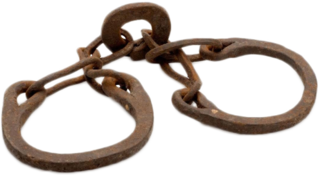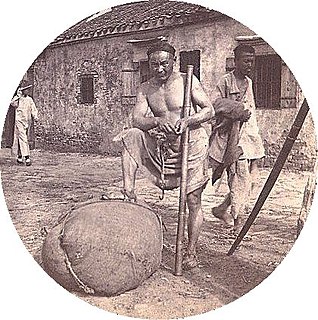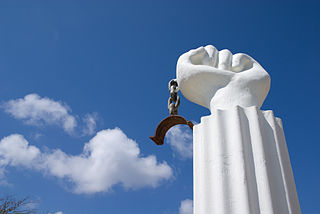 W
WThe history of slavery spans many cultures, nationalities, and religions from ancient times to the present day. However, the social, economic, and legal positions of slaves have differed vastly in different systems of slavery in different times and places.
 W
WSlavery has existed all throughout Asia, and forms of slavery still exist today.
 W
WThe Atlantic slave trade to Brazil refers to the period of history in which there was a forced migration of Africans to Brazil for the purpose of slavery. It lasted from the mid-sixteenth century until the mid-nineteenth century. During the trade, more than three million Africans were transported across the Atlantic and sold into slavery. It was divided into four phases: The Cycle of Guinea ; the Cycle of Angola which trafficked people from Bakongo, Mbundu, Benguela and Ovambo; Cycle of Costa da Mina, now renamed Cycle of Benin and Dahomey, which trafficked people from Yoruba, Ewe, Minas, Hausa, Nupe and Borno; and the Illegal trafficking period, which was suppressed by the United Kingdom (1815-1851). During this period, to escape the supervision of British ships enforcing an anti-slavery blockade, Brazilian slave traders began to seek alternative routes to the routes of the West African coast, turning to Mozambique.
 W
WThe Berbice slave uprising was a slave revolt in Guyana that began on 23 February 1763 and lasted to December, with leaders including Coffy. It is seen as a major event in Guyana's anti-colonial struggles, and when Guyana became a republic in 1970 the state declared 23 February as a day to commemorate the start of the Berbice slave revolt.
 W
WThe Bodmin manumissions are records included in a manuscript Gospel book, the Bodmin Gospels or St Petroc Gospels, British Library, Add MS 9381. The manuscript is mostly in Latin, but with elements in Old English and the earliest written examples of the Cornish language, which is thus of particular interest to language scholars and early Cornish historians. The manuscript was discovered by Thomas Rodd, a London bookseller and it was sold to the British Museum by Rodd in May 1833. It is thought to have been made in Brittany - now part of France - and dates from the last quarter of the 9th century to 1st quarter of the 11th century.
 W
WCaesar was a slave who was a candidate for being both the oldest born person ever photographed and also the oldest born slave ever photographed - he was photographed in 1851. He was also the last slave to be manumitted in New York.
 W
WThe word coolie was first popularized in the 16th century by European traders across Asia, and by the 18th century would refer to migrant Indian or Chinese laborers, and by the 19th century, would gain a new definition of the systematic shipping and hiring of Asian workers under contract on plantations that had been formerly worked by enslaved Africans. The word has had a variety of other implications and is sometimes regarded as offensive or a pejorative, depending upon the historical and geographical context; in India, its country of origin, it is still considered a derogatory slur. It is similar, in many respects, to the Spanish term peón, although both terms are used in some countries with different implications.
 W
WA slave revolt took place in the Dutch colony of Curaçao in 1795, led by Tula, a local slave, and resulted in a month-long conflict on the island between escapees and the colonial government.
 W
WSlavery in the Muslim world first developed out of the slavery practices of pre-Islamic Arabia, and was at times radically different, depending on social-political factors such as the Arab slave trade. Throughout Islamic history, slaves served in various social and economic roles, from powerful emirs to harshly treated manual laborers. Early on in Muslim history they were used in plantation labor similar to that in the Americas, but this was abandoned after harsh treatment led to destructive slave revolts, the most notable being the Zanj Rebellion of 869–883. Slaves were widely employed in irrigation, mining, and animal husbandry, but the most common uses were as soldiers, guards, domestic workers, and concubines. Many rulers relied on military slaves, often in huge standing armies, and slaves in administration to such a degree that the slaves were sometimes in a position to seize power. Among black slaves, there were roughly two females to every one male. Two rough estimates by scholars of the number of slaves held over twelve centuries in the Muslim world are 11.5 million and 14 million, while other estimates indicate a number between 12 and 15 million slaves prior to the 20th century.
 W
WJarya, also called jawaris, was a term for a certain type of slave girl in the Islamic world. They were "slaves for pleasure" or “slave-girls for sexual intercourse”, who had received special training in artistic skills. In contrast to the Qiyan, however, they did not perform for other men than the man in whose harem they were placed.
 W
WThe Monument of the Four Moors is located in Livorno, Italy. It was completed in 1626 to commemorate the victories of Ferdinand I of Tuscany over the Ottomans.
 W
WQiyān were a social class of non-free women, trained as entertainers, which existed in the pre-modern Islamicate world. It has been suggested that "the geisha of Japan are perhaps the most comparable form of socially institutionalized female companionship and entertainment for male patrons, although, of course, the differences are also myriad".
 W
WSlavery became increasingly uncommon through the Middle Ages, replaced by serfdom by the 10th century, but began to revive again towards the end of the Middle Ages and in the Early Modern Era. The Byzantine–Ottoman wars (1265–1479) and the Ottoman wars in Europe resulted in the capture of large numbers of Christian slaves. The Dutch, French, Spanish, Portuguese, British played a prominent role in the Atlantic slave trade, especially after 1600.
 W
WSlavery in New Spain was based mainly on the importation of slaves from Africa to work in the colony in the enormous plantations, ranches or mining areas of the viceroyalty, since their physical consistency made them suitable for working in warm areas.
 W
WSlavery in Somalia existed as a part of the East African slave trade. To meet the demand for menial labor, Bantus from southeastern Africa slaves were exported from the Zanzibar and were sold in cumulatively large numbers over the centuries to customers in Somalia and other areas in Northeast Africa and Asia. People captured locally during wars and raids were also sometimes enslaved by Somalis mostly of Oromo and Nilotic origin. However, the perception, capture, treatment and duties of both groups of slaves differed markedly, with Oromo favored because Oromo subjects were not viewed as racially jareer by their Somali captors.
 W
WThe abolition of slavery occurred at different times in different countries. It frequently occurred sequentially in more than one stage – for example, as abolition of the trade in slaves in a specific country, and then as abolition of slavery throughout empires. Each step was usually the result of a separate law or action. This timeline shows abolition laws or actions listed chronologically. It also covers the abolition of serfdom.